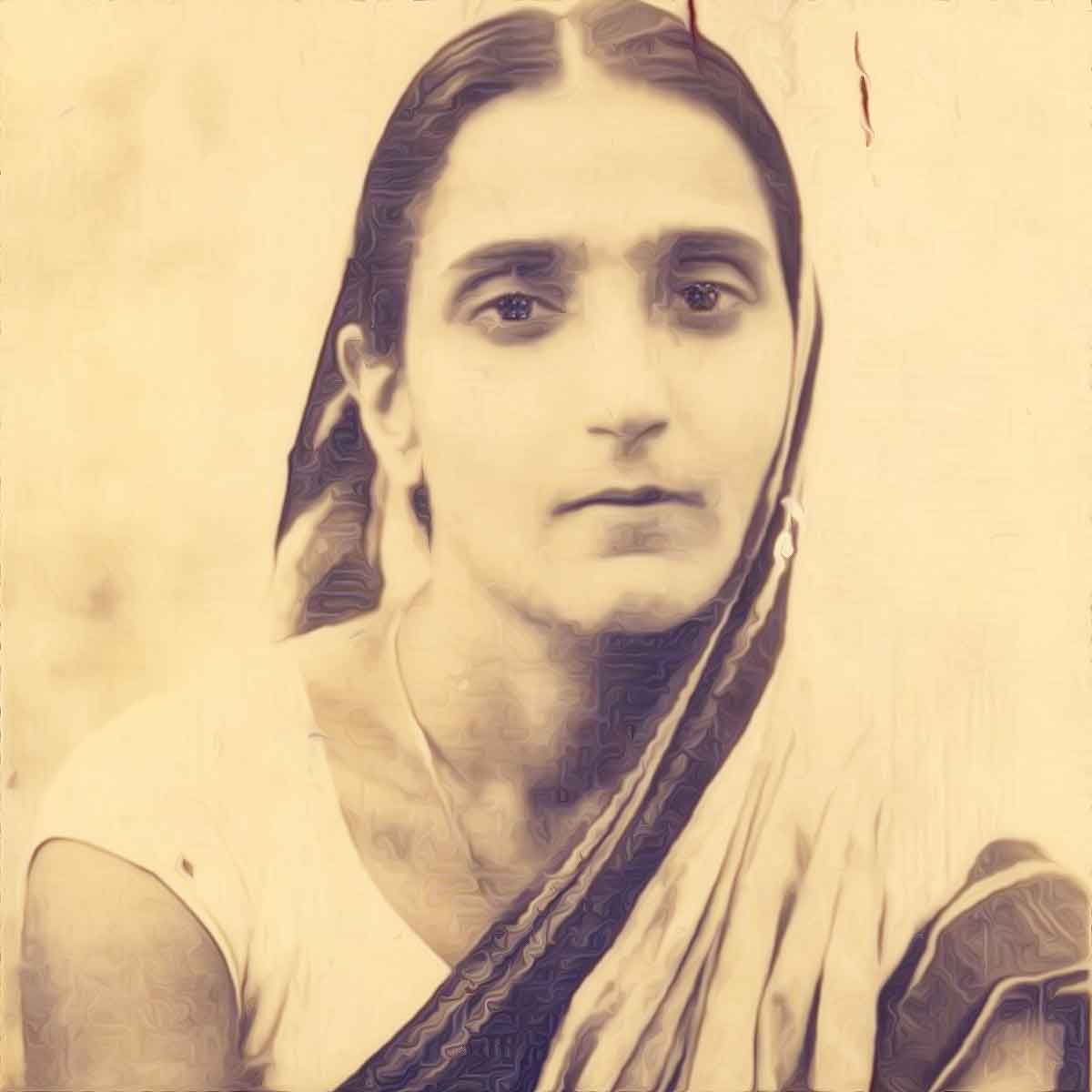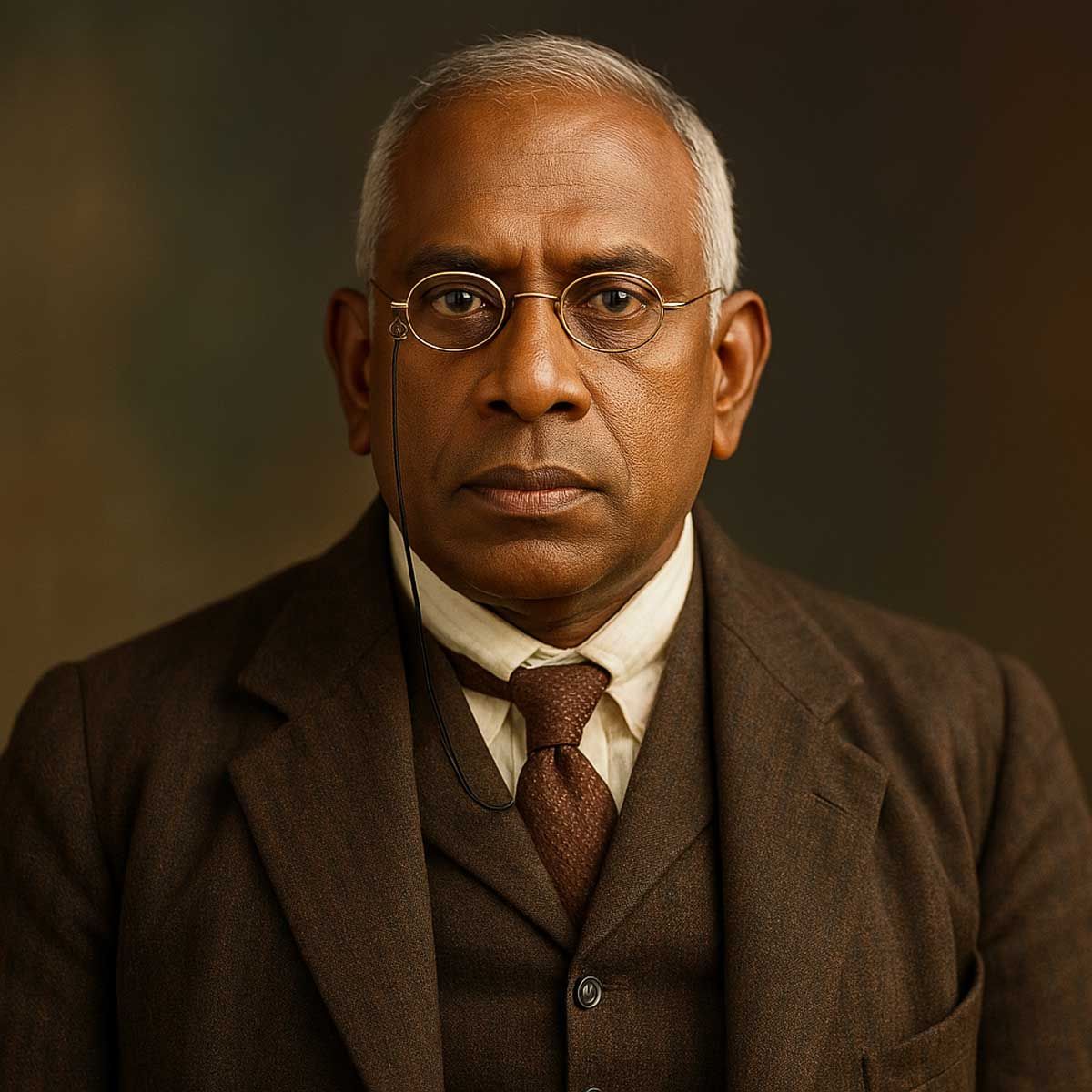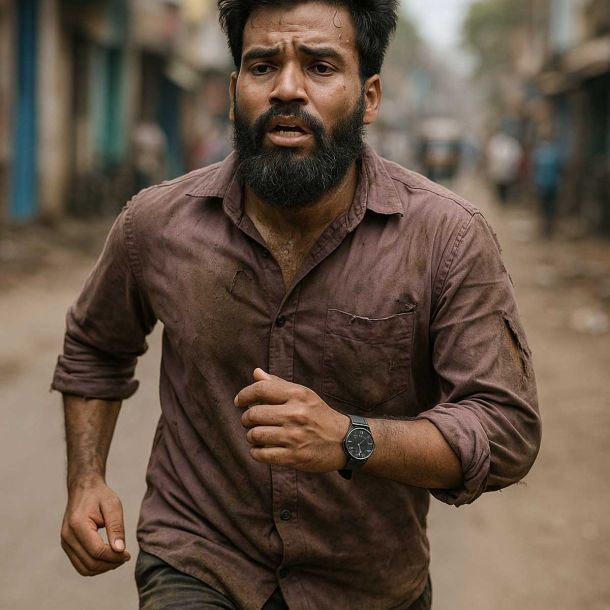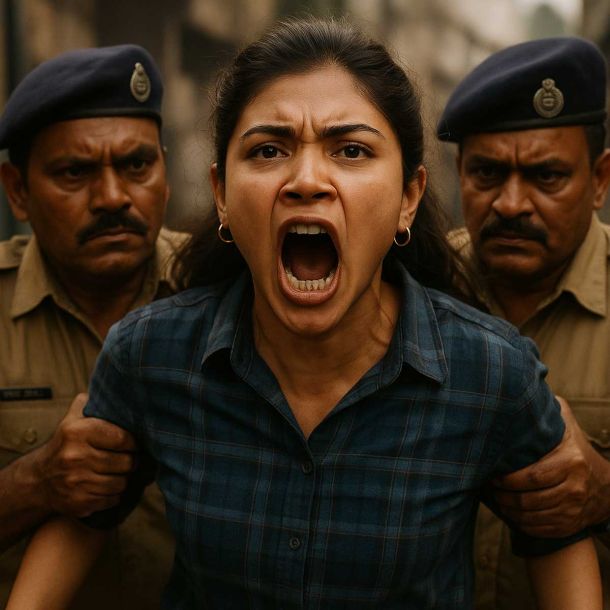More Coverage
Twitter Coverage
Satyaagrah
Written on
Satyaagrah
Written on
Satyaagrah
Written on
Satyaagrah
Written on
Satyaagrah
Written on
Join Satyaagrah Social Media
"It is the cause, not the death, that makes the martyr": Durga Devi Vohra supported her husband to go and blow Britishers, helped Bhagat Singh and Rajguru with money and escape, opened fire on Governor Halley, and shot the Police Commissioner of Mumbai

India has failed miserably in doing justice to our countless freedom fighters. The stories of their bravery, valor, and sacrifice were intentionally wiped out from the history books and official narrative of the Indian freedom struggle. The leftist distorians did this great disservice to the nation. They presented Ahimsa and the political struggle by Congress as the only stream responsible for Indian Independence. Gladly, things are coming back on the right track. The revolutionaries are slowly getting their due recognition.
With a series of articles on Unsung Heroes, we are trying our bit to correct the injustice done to these great souls. This article is our sincere gratitude to a family that dedicated itself entirely to the service of the nation.
Relatively little is known about the ways in which women contributed to the secretive operations of the Hindustan Socialist Republican Association (HSRA), the revolutionary organization formed by Chandrashekhar Azad and Bhagat Singh in 1928 to undermine the British and work towards the establishment of socialism in India. Indeed, the activities of the HSRA have been celebrated more in Indian popular culture than explored in historiography.
The thrilling and heroic stories circulate about the young revolutionaries, who sought to destabilize the British through a series of targeted violent attacks, many of them sacrificing their own lives in the process. As a result, the narratives revolving around Bhagat Singh became established as the face of the revolutionary movement in India, and whom the British charged and hanged as a terrorist in 1931.
The HSRA’s struggle against the colonial state has been celebrated in popular culture, there are many details that remain unknown and untold, a result of twin factors of censorship and censure. The revolutionaries operated secretly and aimed to avoid, for the most part, exposure of their operations and schemes. Consequently, the roles played by women in the HSRA have obscured themselves.
|
The family of revolutionaries
The leftist ‘distorians’ failed to shed their light on the contributions and sacrifice of the Vohra family. Every member of the Vohra family had dedicated their entire life to the service of the nation. Bhagwati Charan Vohra and his wife Durgavati Devi were two prominent revolutionaries from the Vohra family. Patriotism was deeply entrenched in the revolutionary couple. They had a profound urge to live and die for the nation.
Bhagwati Charan Vohra was born on 15th November 1903, in Lahore. His father Shiv Charan Vohra was a high-ranking official in the railways. He married a young girl named Durgavati Devi, only eleven years of age at the time of marriage. However, the Vohras were not an orthodox family. They inspired Durgavati Devi to continue her education. However, his father’s untimely demise brought the family responsibilities over Bhagwati’s shoulders. At the time of his father’s demise, he was completing his education at the National College in Lahore. Even after hardships, Bhagwati motivated his wife to pursue higher education. In 1923, Bhagwati Charan Vohra passed the BA examination from National College. His wife Durgavati Devi obtained Prabhakar’s degree.
Revolutionary life
Bhagwati Charan Vohra was a revolutionary thinker, organizer, and speaker. He was deeply committed to the ideals of freedom. His invincible courage made him one of the symbols of the revolution. He was an avid reader who infused intellectual ideology in the working of every organization he was associated with. The revolutionary couple had received monetary help from their parents that would help them in times of crisis. Durgavati’s father Banke Bihari gave her five thousand rupees. Her Father-in-law Shiv Charan Vohra gave 40 thousand rupees. Contrary to other ordinary beings the couple used every penny of that money in the service of the nation and to strengthen their revolution against the Britishers.
Later, Bhagwati Charan Vohra along with his associates decided to join the Hindustan Republican Association. In the year 1924, famous revolutionary Shachindranath Sanyal wrote the manifesto of the Hindustan-Democratic Union – ‘The Revolutionary’. Bhagwati Vohra was entrusted with the responsibility to distribute the manifesto widely on January 1, 1925, which he accomplished very well.
In March 1926, Bhagwati Charan Vohra and Bhagat Singh jointly prepared the draft of Naujawan Bharat Sabha and founded it together with Ramchandra Kapoor. Hundreds of youths took an oath to sacrifice their lives to liberate the country. Every member including Bhagat Singh and Bhagwati Charan Vohra signed the pledge with their blood.
The general secretary of this Naujawan Bharat Sabha was Bhagat Singh and the propaganda (publicity) secretary was Bhagwati Charan Vohra. Apart from Bhagat Singh, Bhagwati Charan Vohra was the main theorist of the organization. In April 1928, the manifesto of the Naujawan Bharat Sabha was published. Bhagwati Charan Vohra had the task of preparing the draft in consultation with Bhagat Singh and other colleagues.
Bhagwati Charan Vohra was a Marxist and secular revolutionary in the true sense. There was a mandatory rule in Naujawan Bharat Sabha that ‘Halal and Jhatka meat shall be cooked together, which Hindus, Muslims, and Sikhs will eat together’. This rule is not a figment of imagination but has been authenticated by Kuldeep Nair in his book ‘Without Fear’. Apparently, he is one of the darling journalists of the left-liberal cabal.
This rule clearly vindicates that Bhagwati Chandra Vohra hated discriminatory rules for Hindus and Muslims. He was a vocal supporter of religious unity without appeasing anyone. Apart from this, like Bhagat Singh, Bhagwati Charan Vohra was strongly anti-Urdu and from time to time, this was clarified through HSRA. Bhagwati Charan Vohra was accused of Lucknow’s Kakori train robbery and Lahore conspiracy case. He was also involved in the murder of British Sergeant JP Saunders who was responsible for killing Lala Lajpat Rai. Even after his relentless attacks, Britishers never got success in arresting him.
He never pulled back from doing revolutionary work. Evidently, even after being surrounded by so many allegations, Bhagwati Charan made relentless efforts to blow up the Viceroy in the moving train. Yashpal, Indrapal, and Bhagaram helped him in carrying out this act. After months of preparation, the revolutionaries were successful in detonating the special train on the appointed date, but the Viceroy survived. The pantry compartment of the train was damaged and a man died in it. MK Gandhi called the revolutionaries cowards in the Young India magazine.
In response to that Bhagwati Charan Vohra wrote an influential article in his language in name of ‘Philosophy of the Bomb’. This article became the talk of the town. Police made several attempts to trace its original source but they failed miserably.
| TERRORISM THE REVOLUTIONARIES already see the advent of the revolution in the restlessness of youth, in its desire to break free from the mental bondage and religious superstitions that hold them. As the youth will get more and more saturated with the psychology of revolution, they will come to have a clearer realization of national bondage and a growing, intense, unquenchable thirst for freedom. It will grow, this feeling of bondage, this insatiable desire for freedom, till, in their righteous anger, the infuriated youth will begin to kill the oppressors. Thus has terrorism been born in the country. It is a phase, a necessary, an inevitable phase of the revolution. Terrorism is not the complete revolution and the revolution is not complete without terrorism. This thesis can be supported by an analysis of any and every revolution in history. Terrorism instills fear in the hearts of the oppressors, it brings hopes of revenge and redemption to the oppressed masses, it gives courage and self-confidence to the wavering, it shatters the spell of the superiority of the ruling class and raises the status of the subject race in the eyes of the world because it is the most convincing proof of a nation’s hunger for freedom. Here in India, as in other countries in the past, terrorism will develop into a revolution and the revolution into independence, social, political, and economic. |
In 1932, intelligence authorities discovered a lengthy HSRA manifesto which they attributed to Bhagat Singh, executed the year before. It contained extensive ideological ruminations, and incisive Marxist analysis of the state of colonialism in India, noting that ‘pleasure of ruling may be bombed out or pistoled down, but the practical gain from exploitation’ remained. The document mapped out opportunities for the revolutionaries to intervene in the Congress-dominated political landscape, and while disclaiming that there was ‘no artificial barrier is recognized between men and women’, it also noted that there was, practically speaking, less scope for women to undertake military training. However, it explicitly included roles for women in the party, particularly in intelligence-gathering, fundraising, and espionage. The particular utility of women in these roles becomes apparent in Durga Devi’s revolutionary life story.
|
Durga Bhabhi
Durga Devi bore a son, Sachinanda in 1925, but she remained committed to teaching and was engaged in work at a girls’ college in Lahore in 1928 when the HSRA began to mobilize. Bhagwati Charan’s radical political activities brought him to the attention of the CID, and the couple were aware of being monitored, suspecting that their driver was planted by the CID. In 1928, Bhagwati Charan rented the property at the behest of Sukhdev, the mastermind of the Lahore Conspiracy Case, to be used for party activities, including the manufacture of bombs. Durga Devi supported her husband in this, according to Kumari Lajjawati, ‘her one motive was to do whatever her husband did ... she said, “I’ll do whatever Bhagwati Charan says”’. Her thoughts on being a revolutionary were to develop as she was increasingly drawn into the HSRA.
In early December 1928, Bhagwati Charan left Lahore to attend the annual meeting of the Indian National Congress in Calcutta, leaving a large sum of money with his wife in case of emergency – 4000 or 5000 rupees, as she recalled. On December 18, Bhagat Singh and Rajguru gunned down a British police officer in Lahore, JP Saunders, in revenge for a lathi attack, which the previous month had led to the death of the elderly Punjabi Congressman, Lala Lajpat Rai. Late that night, Sukhdev and Bhagat Singh came to Durga Devi for help, bringing with them Rajguru, the Maharashtrian marksman who had come to Lahore specifically for the assassination. She had heard of the murder – all of Lahore was abuzz with the news, following the HSRA posters that boldly claimed responsibility. She implicitly knew that Bhagat Singh was involved, yet consistent with party protocol, she did not ask any questions, presuming that Rajguru, whom she had never met before, was a servant.
She readily gave over the sum of money her husband had left her, and rather daringly, given social conventions of the time that constrained contact between men and women who were not married, agreed to pose as Bhagat Singh’s wife in order to help him escape Lahore. With her son Sachi, and accompanied by Rajguru (pretending to be the young family’s servant) they evaded a police cordon and boarded a train, in which they traveled first class to Lucknow, where they changed trains, heading to Calcutta. Azad also escaped Lahore in the company of women. Disguised as a panda and wearing a ramnami angochha shawl, Azad traveled with Sukhdev’s mother and sister, as though he was escorting them on a pilgrimage.
This nearly impossible task paid off just because of the understanding of Durga Bhabhi and Britishers kept mulling their hands.
|
From Lucknow, Bhagat Singh sent a telegram to Bhagwati Charan, informing him that he was coming to Calcutta with ‘Durgawati’. This was received with great surprise: ‘Who is this Durgawati?’ The party arrived at Calcutta, where Bhagwati Charan was staying with his sister, Sushila, who was also to become an active revolutionary. It was with an element of surprise that Bhagwati Charan learned of his wife’s role in helping Bhagat Singh and Rajguru escape, ‘and he was very happy. Then he complimented his wife; I have not recognized you until now; today I can understand that I have got a revolutionary wife’.
After attending some sessions of the Calcutta Congress, Durga Devi returned to Lahore with her son. Bhagwati Charan, who had learned how to make bombs from revolutionaries in Calcutta, was drawn into the plan to launch an attack on the Legislative Assembly. In early April 1929, Durga Devi was summoned by Bhagwati Charan to come to Delhi to farewell Bhagat Singh. With Sushila, she went to Delhi and met her husband, Azad, and Bhagat Singh in Qudsia Park, where they picnicked, feeding Bhagat Singh his favorite foods, sweets, and oranges. Again, no words were spoken of the plan to bomb the Legislative Assembly, it was simply understood that he was going to perform some ‘action’ and that he may not survive it. Sushila made an incision in her thumb and gave Bhagat Singh a protective tika of her blood. When Bhagat Singh left the picnic, he went directly to the Assembly, where with BK Dutt he threw two bombs into the chamber, before offering himself for arrest, setting in motion the events that would lead to his execution in 1931.
Unfortunately, in 1930 this family suffered a severe blow. In view of the increasing influence of the revolutionaries, Lord Irwin issued a special ordinance under the Defence of India Act 1915, which stated that the proceedings would continue without the presence of the accused and no appeal could be made.
On this Chandrashekhar Azad and the Vohra, the family decided that the revolutionaries should be freed from the Lahore jail by the use of new and more powerful bombs on their way to the court. For this, experiments were going on in Delhi for months under the guise of a soap factory, which was named ‘Himalaya Toiletry’.
However, the 28th of May, 1930, proved to be a black day. While making bombs with his revolutionary comrades on the banks of river Ravi, a bomb exploded in his hand and he died.
After that, on 9th October 1930, Durga Bhabhi opened fire on Governor Halley, which the Governor survived but military officer Taylor got injured. Durga Bhabhi had also shot the Police Commissioner of Mumbai. After that, the British police trailed them. Durga Bhabhi and partner Yashpal were arrested from a flat in Mumbai. A cycle of absconding, arrest, and release continued from 1931 to 1935.
Finally, after being transferred from Lahore to District Badar, she started working as a teacher in Pyarelal Girls School in Ghaziabad in 1935. In 1939, she went to Madras and took training in the Montessori method of teaching. After that, she opened a Montessori school with only five children in a private house on Cantt Road (Nazirabad) in Lucknow. Even today this school is known as Montessori Inter College in Lucknow.
It is disheartening to note that this family never got Justice and respect they deserved. Durgavati Devi died in oblivion on October 14, 1999.
The revolutionaries who gave their everything for the nation deserve Justice. They need to be taught in the school syllabus. Their sacrifices and bravery need to be told to the present and next generations so that the historic injustice done to these great souls can be corrected.
 Support Us
Support Us
Satyagraha was born from the heart of our land, with an undying aim to unveil the true essence of Bharat. It seeks to illuminate the hidden tales of our valiant freedom fighters and the rich chronicles that haven't yet sung their complete melody in the mainstream.
While platforms like NDTV and 'The Wire' effortlessly garner funds under the banner of safeguarding democracy, we at Satyagraha walk a different path. Our strength and resonance come from you. In this journey to weave a stronger Bharat, every little contribution amplifies our voice. Let's come together, contribute as you can, and champion the true spirit of our nation.
 |  |  |
| ICICI Bank of Satyaagrah | Razorpay Bank of Satyaagrah | PayPal Bank of Satyaagrah - For International Payments |
If all above doesn't work, then try the LINK below:
Please share the article on other platforms
DISCLAIMER: The author is solely responsible for the views expressed in this article. The author carries the responsibility for citing and/or licensing of images utilized within the text. The website also frequently uses non-commercial images for representational purposes only in line with the article. We are not responsible for the authenticity of such images. If some images have a copyright issue, we request the person/entity to contact us at This email address is being protected from spambots. You need JavaScript enabled to view it. and we will take the necessary actions to resolve the issue.
Related Articles
- “Everything you’ve ever wanted is on the other side of fear”: Mula Gabharu, one among phenomenal patriotic women who fought with Mughals for her husband, for motherland, called the people of Assam to fight Mughals by taking Ahom sword in their hands
- "Courage makes a man more than himself; for he is then himself plus his valor": Surya Sen - hero behind Chittagong armory raid & attack on Europeans only club that shook British like never before, brutally tortured and executed by British on Jan 12, 1934
- In just 8 years, a forgotten warrior carved through Ladakh, Baltistan, and even Tibet with 6,000 men—his name was General Zorawar Singh, and though he fell in 1841 at Toyo, his sword drew the borders we still live by; a hidden tale buried in Himalayan ice
- A revolutionist freedom fighter who the British Raj framed for murder
- "Courage is contagious. When a brave man takes a stand, the spines of others are often stiffened": Tarabai Bhosale - Maratha Queen who singlehandedly led a successful war against the forces of one of the mightiest rulers Aurangzeb
- "Heroes are ordinary people that have achieved extraordinary things in life”: Samadhi of Hemachandra Vikramaditya, the last Hindu king to sit throne of Delhi, one of India's best military generals, achieving victory spree in 22 battles converted to Dargah
- “Sometimes you have to pick the gun up to put the Gun down”: Bhagwati Charan Vohra and Bhagat Singh threw ‘Philosophy of Bomb’ in response to "Cult of Bomb" by Gandhi who launched a crusade against revolutionaries that cost him his career
- "Arriving at one goal is the starting point to another": CM Bommai and Speaker VH Kageri unveils the portrait of revolutionary freedom fighter Veer Savarkar in the Assembly hall of the Suvarna Vidhana Soudha in Belagavi, Congress stages protest
- Vinayak Damodar Savarkar – A Misunderstood Legacy
- Bhagat Irwin Gandhi - Martyrdom of Shaheed Bhagat Singh (Some Hidden Facts)
- "बावनी इमली": In 1858, at Bawani Imli in Fatehpur, 52 revolutionaries led by Jodha Singh Ataiya were brutally hanged from a tamarind tree by the British, a forgotten chapter of India's freedom struggle buried under decades of silence and neglect
- Remarkable return to Uttar Pradesh of Dr. Gita Patel, a Sardar Vallabhbhai Patel's descendant, embraces the state's good governance under Aditya Yoginath, she ushers in a groundbreaking revolution in cancer treatment, shaping a brighter future for UP
- Unsung Heroine Pritilata Waddedar, Who Shook The British Raj at the age of 21
- "Kuyili - the first suicide bomber of India during freedom struggle": Army commander of queen Velu Nachiyar poured ghee over herself and entered ammunition warehouse of Britishers resulting in an explosion that defeated British
- "True courage is not the brutal force of vulgar heroes, but the firm resolve of virtue and reason": Vinayak Damodar Savarkar who coined the Hindu nationalist ideology of Hindutva is an essence of Bharat and will continue to inspire generations to come
























